TP-Link Deco M9 Plus
Whole-home Wi-Fi evolved

On an average day, my apartment has 15 active devices on our network. These range from our computers and phones, to tablets, cylindrical assistants, printers, game consoles, and the growing panoply of smart home devices in our lives.
It seems like a lot of devices for two people and a pair of bunnies, but I bet that if you started counting, you’d find that an average home’s device density is a steadily-growing metric.
Having a good network infrastructure has become something of a necessity for such connected homes, which is why so many companies are investing heavily in building out mesh systems to provide and distribute a strong connection to every corner of your property.
What’s New
TP-Link’s Deco system has been my choice since the original M5 was released last year, and much of what I wrote then applies to the revised M9 units released last month.
The new hardware has several changes, but the most notable are the upgraded network bands and the inclusion of a built-in smart home hub.
Unlike the M5 units (which remain compatible, so you can mix and match within a network), the new M9 hardware features tri-band Wi-Fi. This effectively dedicates an entire band to network signals between Deco units. In practical terms, it means that the core functionality of distributing internet access across Deco units no longer eats into the available network bandwidth because it has its own dedicated “lane” for that.
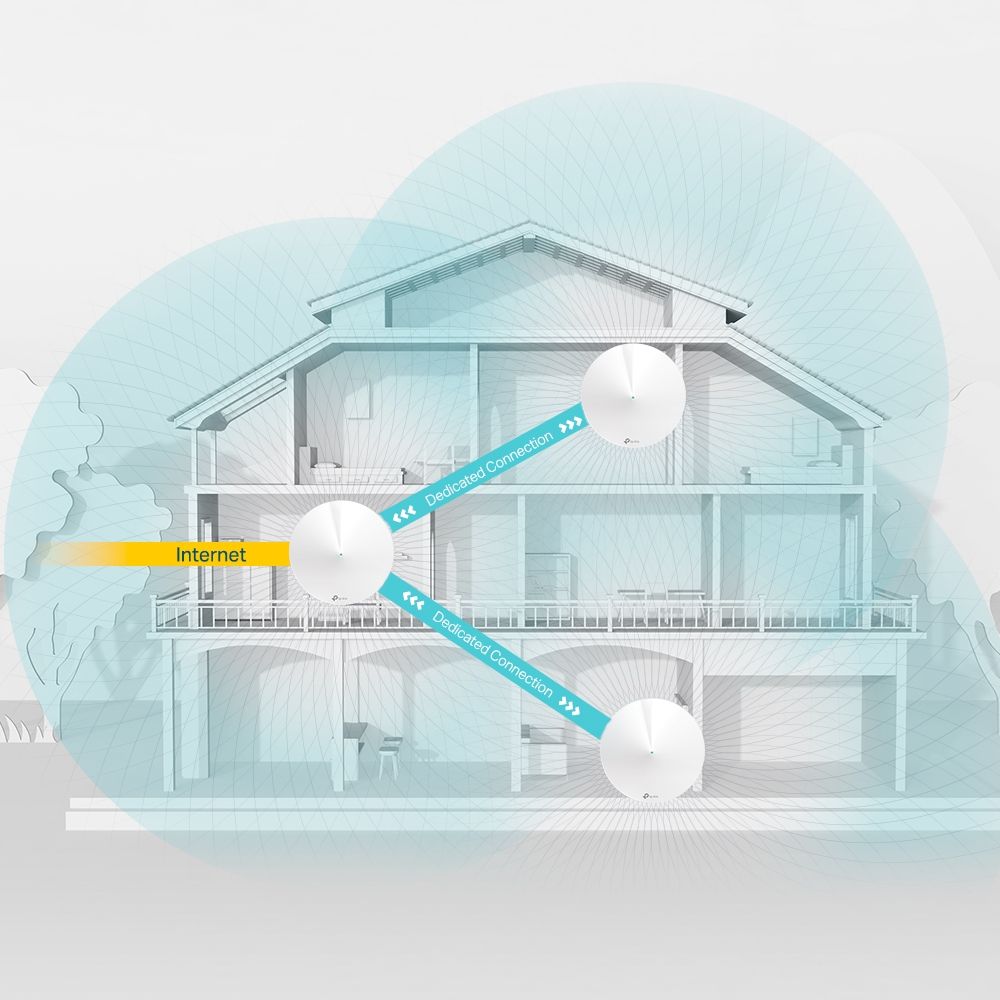
This has become common practise, allowing the gigabit-compatible routers to provide higher effective speeds to the devices on the network.
The second major upgrade is the inclusion of Zigbee/Bluetooth/Wi-Fi smart home hub functionality into each M9 unit. Now, devices ranging from smart plugs, to Nest thermostats, to Samsung SmartThings sensors can operate without the need for their own dedicated hub device cluttering up your home.
In my case, this latter upgrade isn’t relevant since I use TP-Link smart bulbs and plugs specifically because they don’t require a hub—they’re Wi-Fi-only. That being said, the knowledge that I no longer need a hub for other brands’ devices makes me much more likely to consider adding them if I expand my smart home setup.
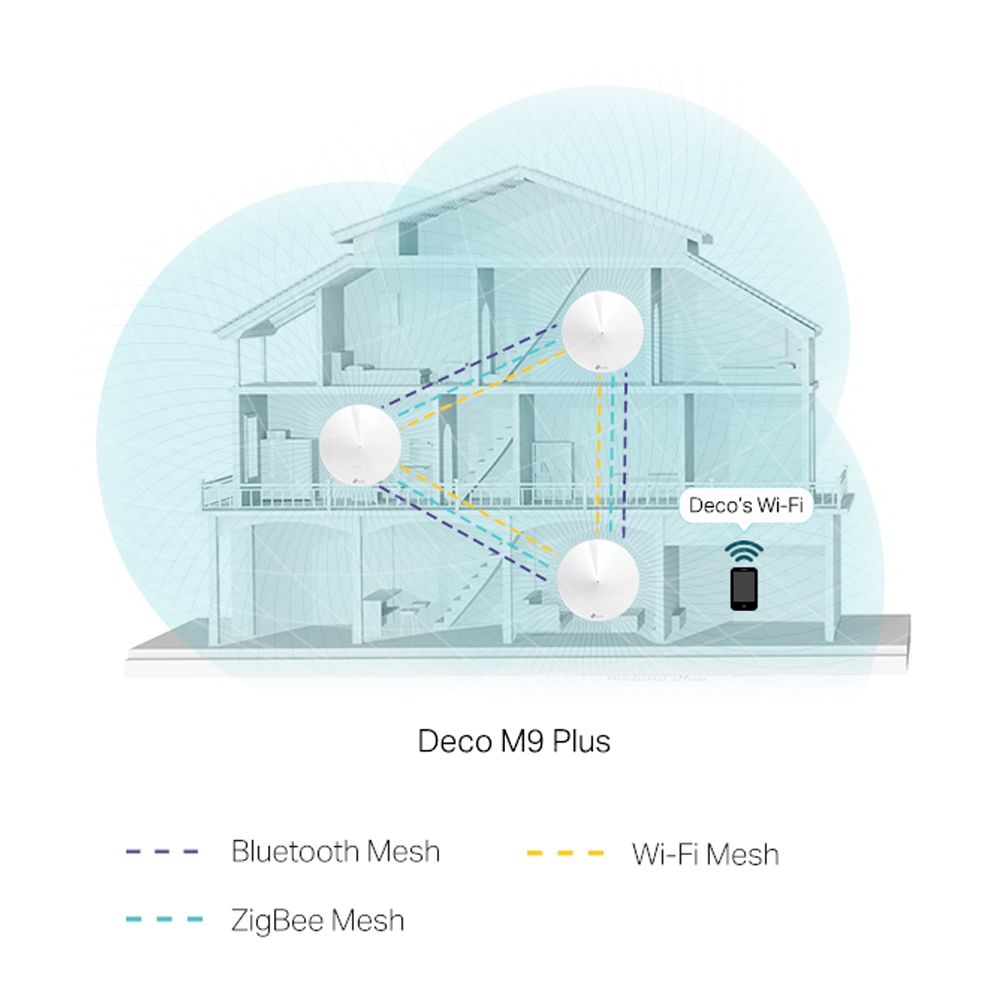
Speedy
Since the last time I wrote about Deco, I’ve managed to upgrade my internet to the fastest speeds available in my area.
Having gigabit service allows me to finally push the limits of networking hardware throughput, and I’m pleased to report that the M9 has no trouble making the most of the available speed.
My iMac, connected via ethernet, gets ~930Mbps download speeds, and my iOS devices get ~500Mbps over Wi-Fi all over the apartment.
Streaming is now effortless, and things like game and movie downloads are now so fast that I can have a 50GB+ game fully downloaded within 20 minutes on my original PS4, while Shannon watches Netflix and our computers upload the latest cut of a client video project to cloud storage.
That kind of load is balanced expertly by the Deco system.
Security
Moreover, one of the core benefits of TP-Link’s system continues to bring peace of mind: security.
Powered by TrendMicro (one of the leading providers of enterprise cybersecurity solutions), Deco’s HomeCare system constantly monitors network traffic to prevent viruses, malware, and access to dangerous content. The filters can be disabled individually, but I keep them on.
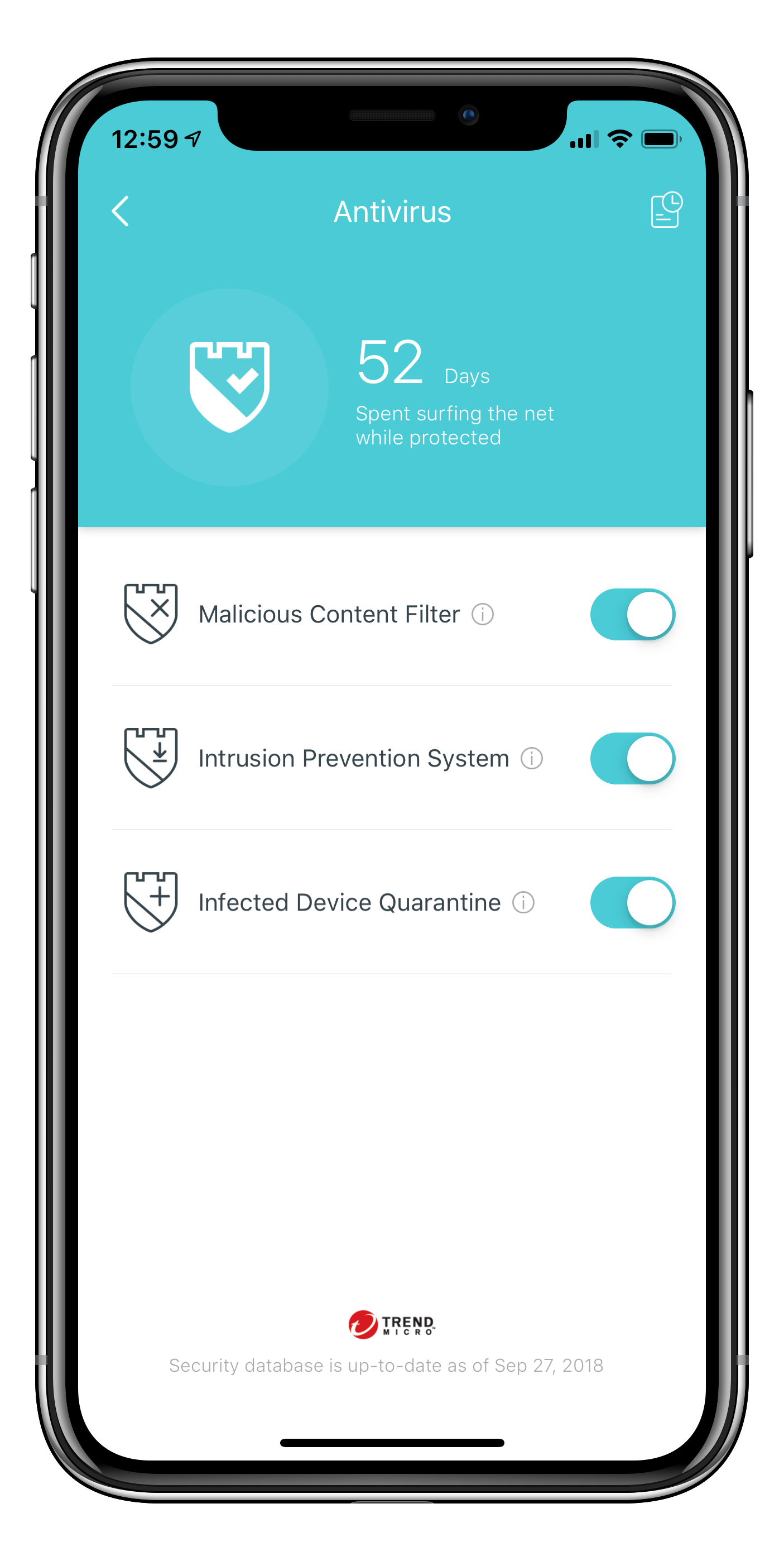
Every now and then, my phone will ping me with a notification that Deco has blocked an intrusion attempt or blocked connections to known spam sites (often via hidden ad content on a website). Each time, I’m grateful that these threats are being screened at the router level, particularly for my smart home devices that don’t have firewalls or other built-in ways to defend themselves.
I’m not sure I’d feel comfortable having them in my home without something like Deco’s always-updated security working to keep malicious traffic from getting in or out.
Network Management
The Deco app recently received an update that improved its interface for managing your network. The app now has tabs for setting up shortcuts and automation routines for your smart home devices, and it has an easy-to-navigate settings section that provides a good balance of control over the nitty-gritty details of configuring your network.
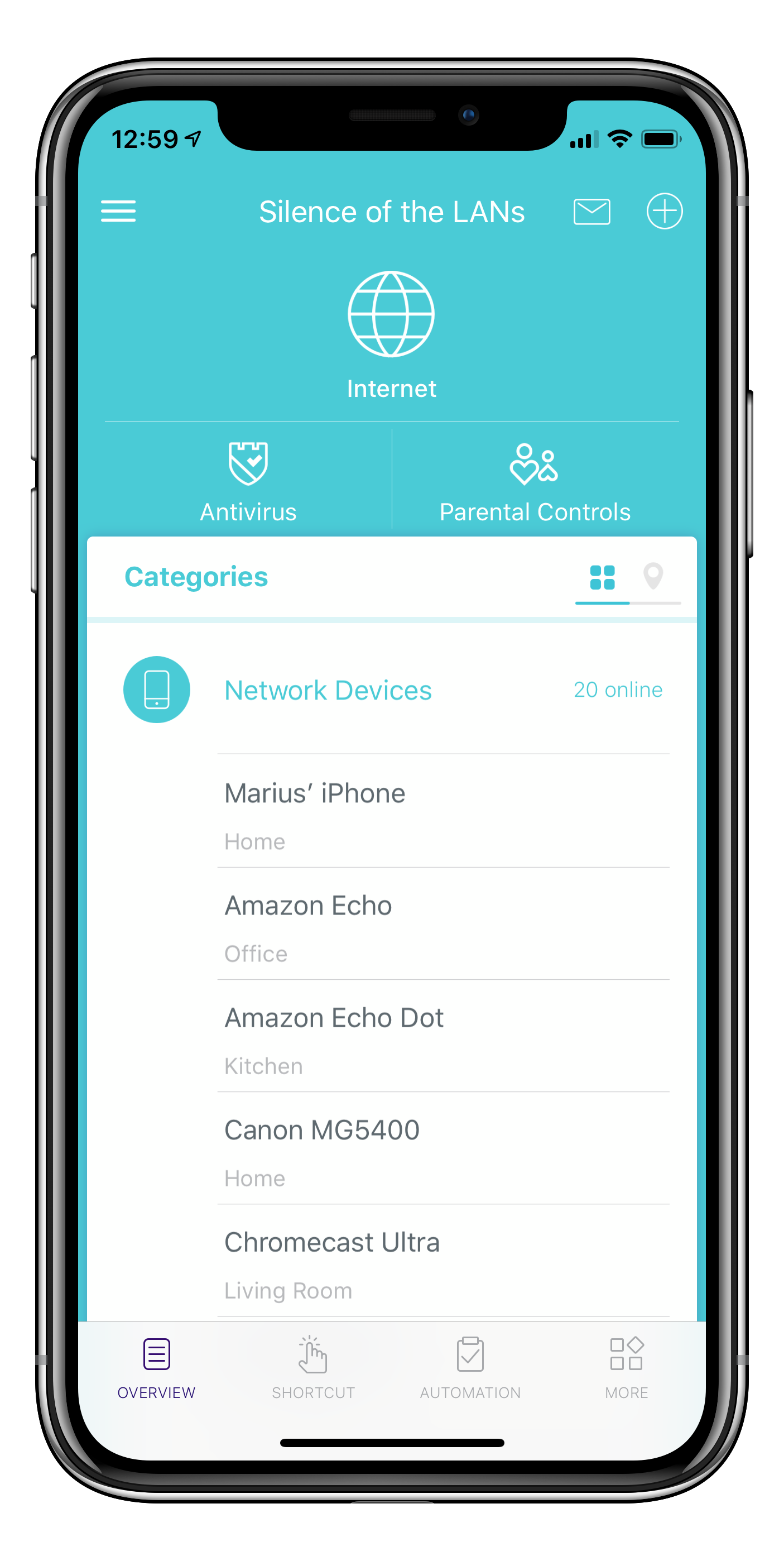
The beauty of it is that you probably don’t have to touch any of those settings for things to work well—I didn’t. Setup was just as easy as before, with the app guiding you through the process of creating the network and adding each Deco unit to the system.
I was up and running within ten minutes of unboxing the two M9 units that come in the box, and the network has been rock solid ever since. Firmware updates regularly roll out to improve functionality, and are applied automatically.
I also love that you can manage multiple networks with the app, so for example I can manage my apartment network as well as my mum’s home network remotely since both use Deco.
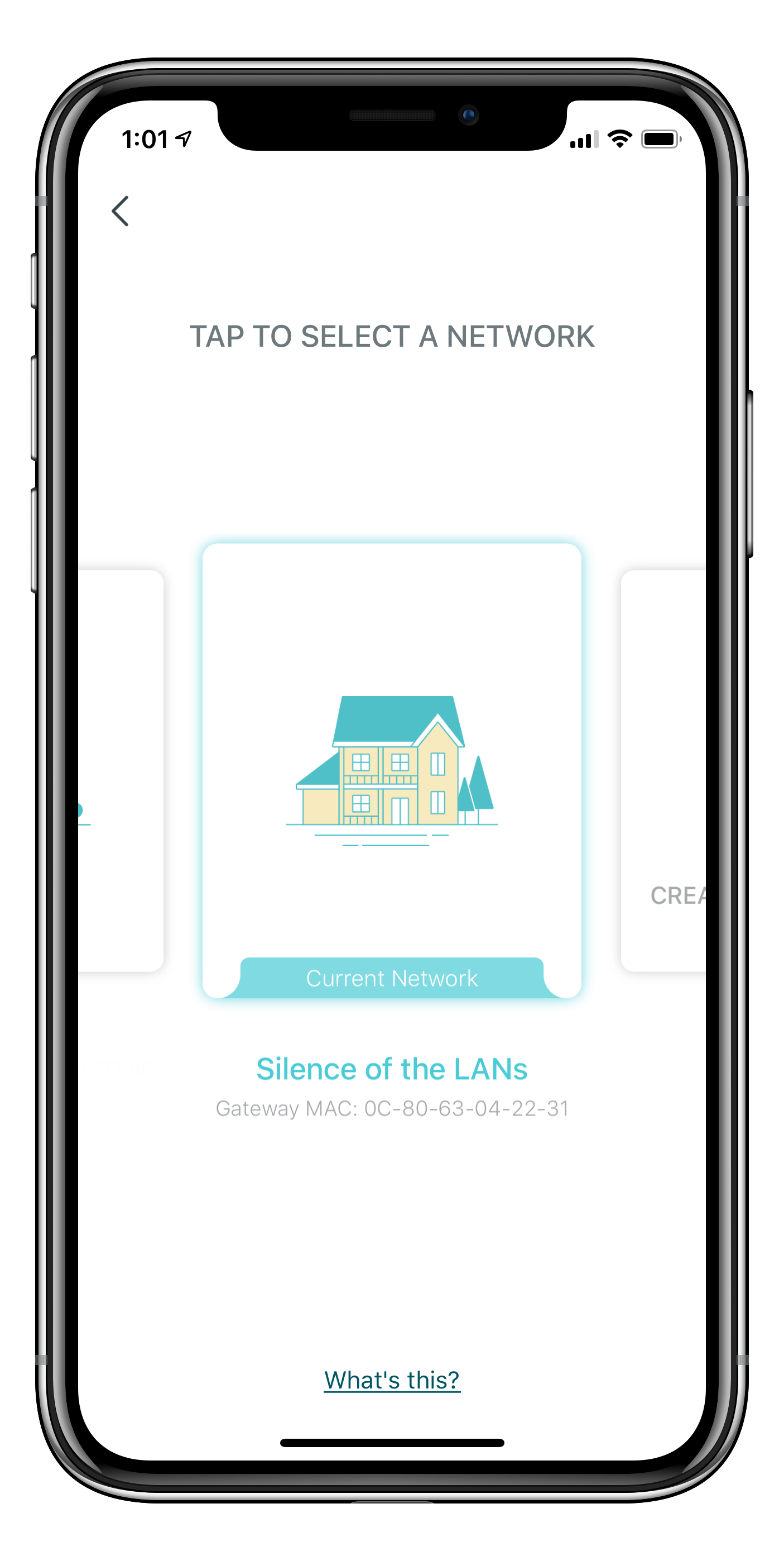
One of the best features for parents is the ability to set up user profiles and assign devices on the network to those profiles. This allows you to selectively block all of a user’s devices from accessing the network, effectively “turning off the internet” for just one person at will. A less draconian use case is the ability to prioritize your work computers’ bandwidth over miscellaneous smart home devices. You can also adjust content filters, set time limits, and view usage insights right from the app.
Combined with an awareness of which room each smart home device is in, Deco becomes a much more useful network than your average dumb router can provide, giving you intuitive control over how your devices access the internet and when.
A Worthy Upgrade
If you’re new to mesh systems, the new Deco M9 units are a perfect starting point. The more powerful M9s are slightly larger than last year’s M5s, but a kit also comes with just two instead of three, since the more powerful routers can provide the same approximate coverage.
Existing M5 users can also add M9 units to their network to improve performance thanks to the tri-band Wi-Fi broadcast, and heavy smart home users may be able to ditch their existing smart home hub too, replacing it with the one built into the M9.
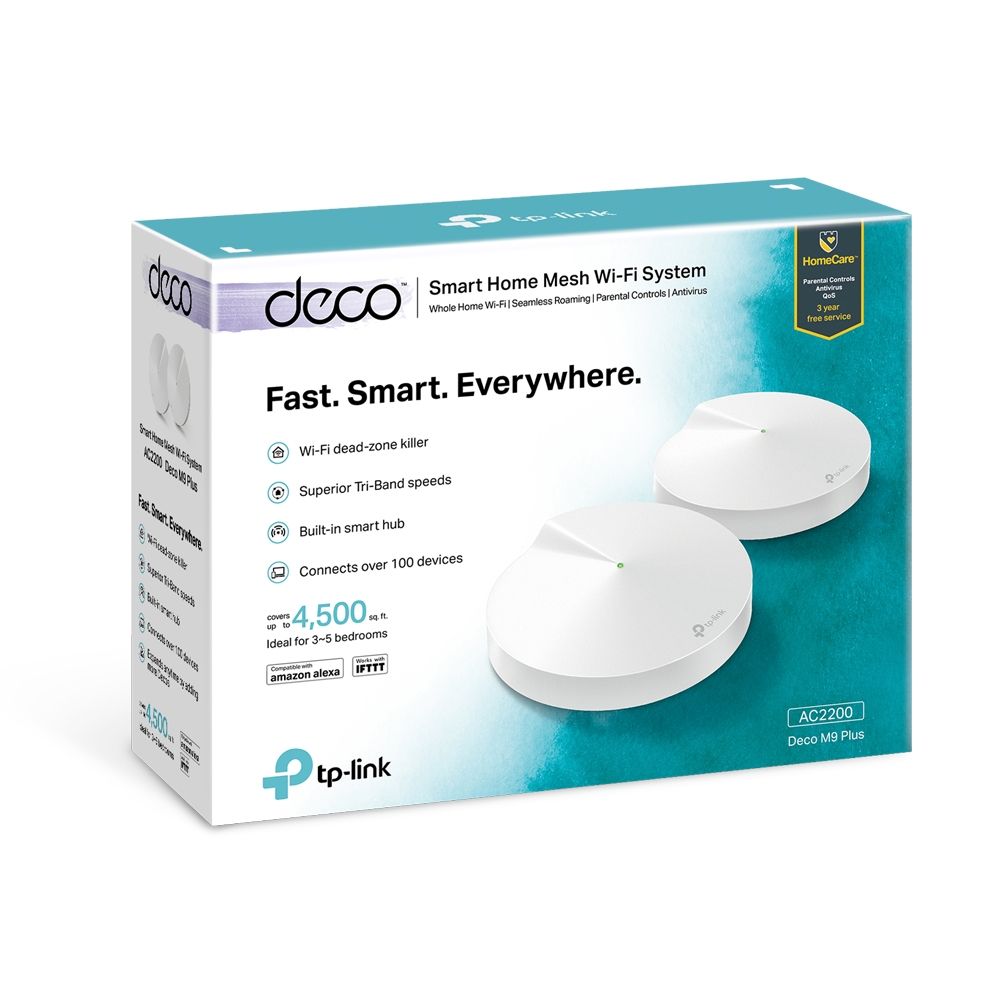
At $399CAD, the M9 Plus starter kit is a terrific value compared to many of its competitors. The equivalent Eero starter kit, for instance, costs $399USD, covers only 3,000 sq.ft. instead of Deco’s 4,500, and it requires 3 hardware units instead of two. Not only that, but the security features require a $99USD/year subscription, whereas Deco includes coverage for 3 years.1
Networking isn’t the most exciting category in the gadget space, but as our homes get smarter and more connected, protecting those connections with a trustworthy and quick network setup is a no-brainer.
What the renewal cost is after the three year period has yet to be determined, but I will update this post if I find out.↩︎